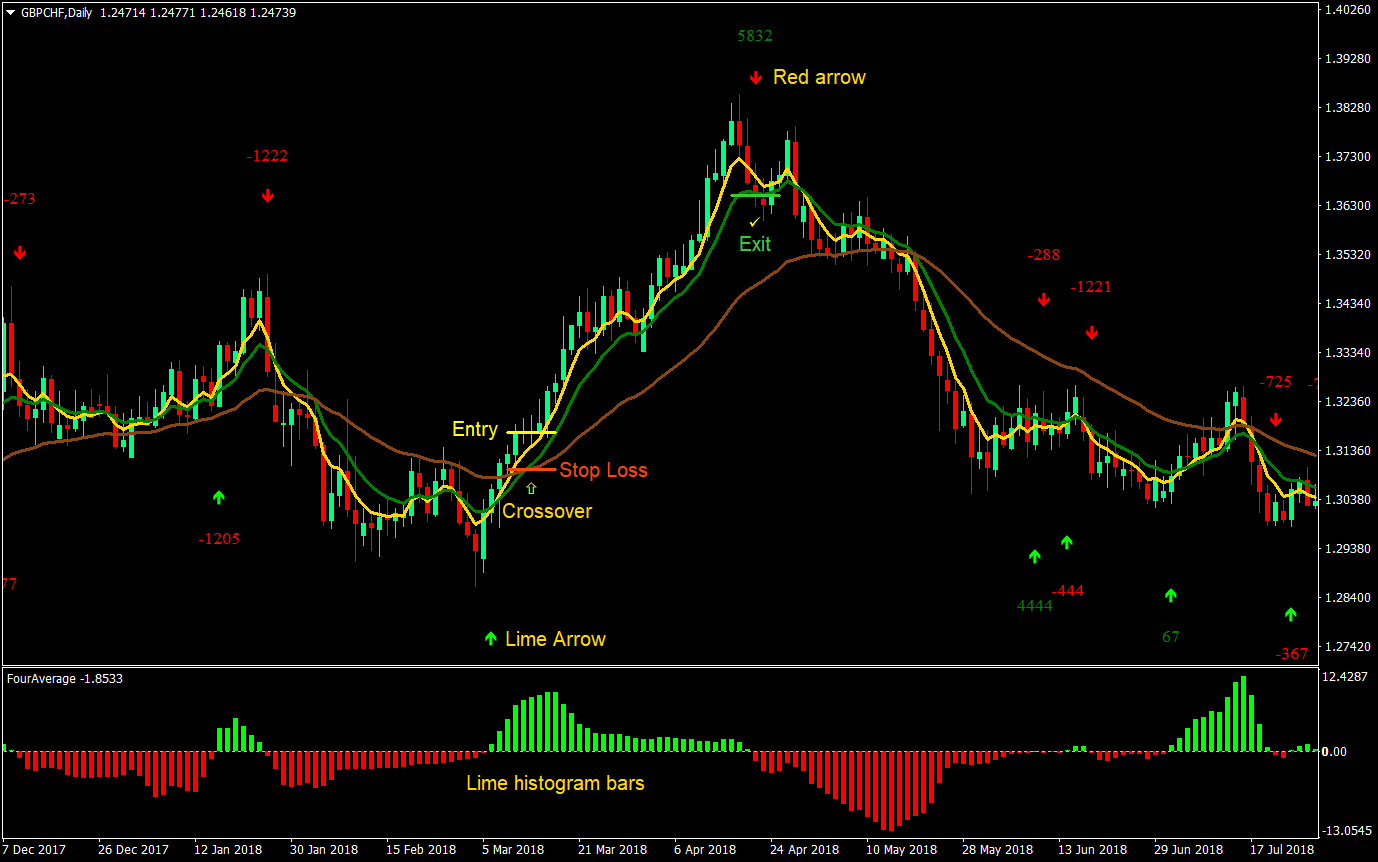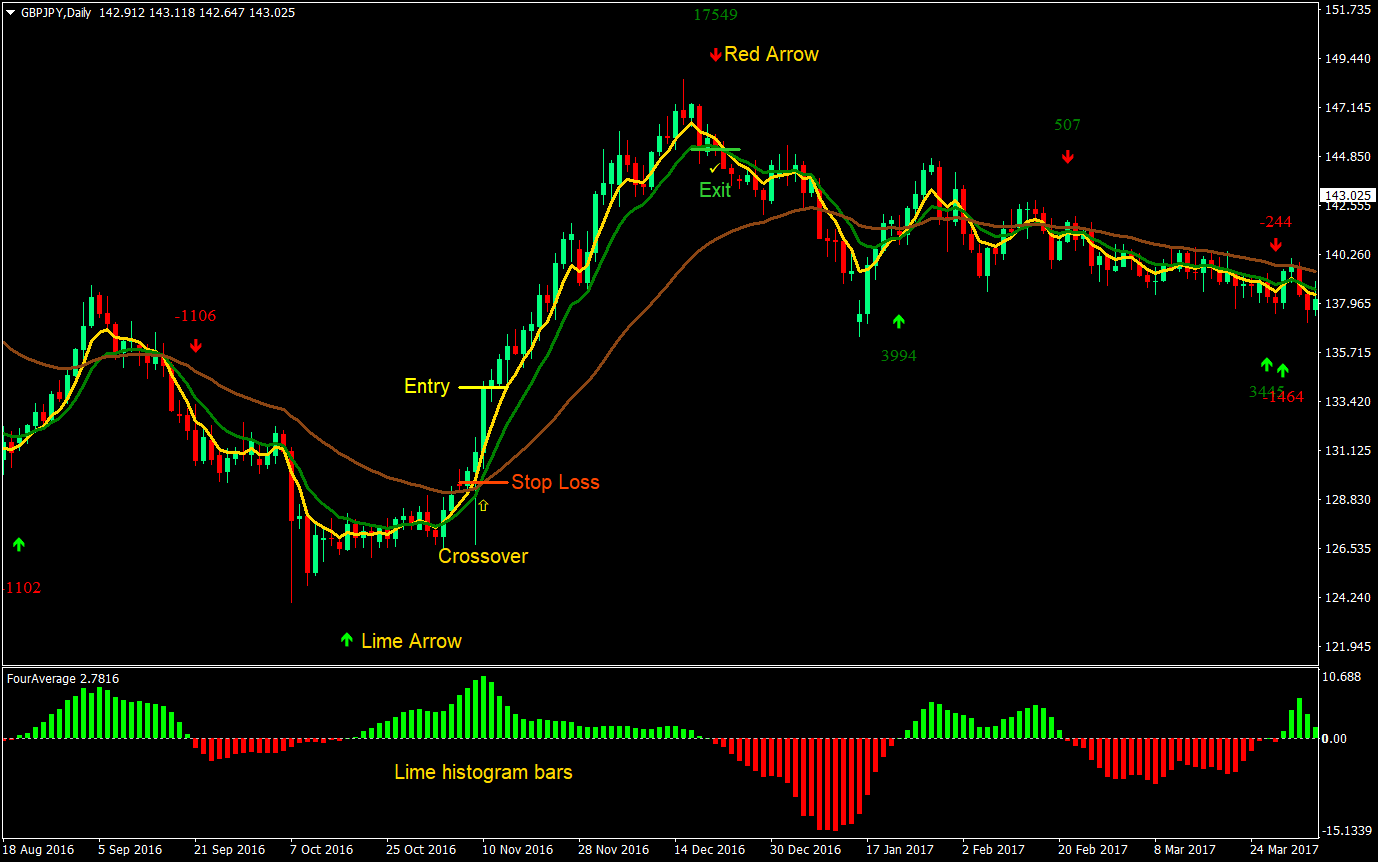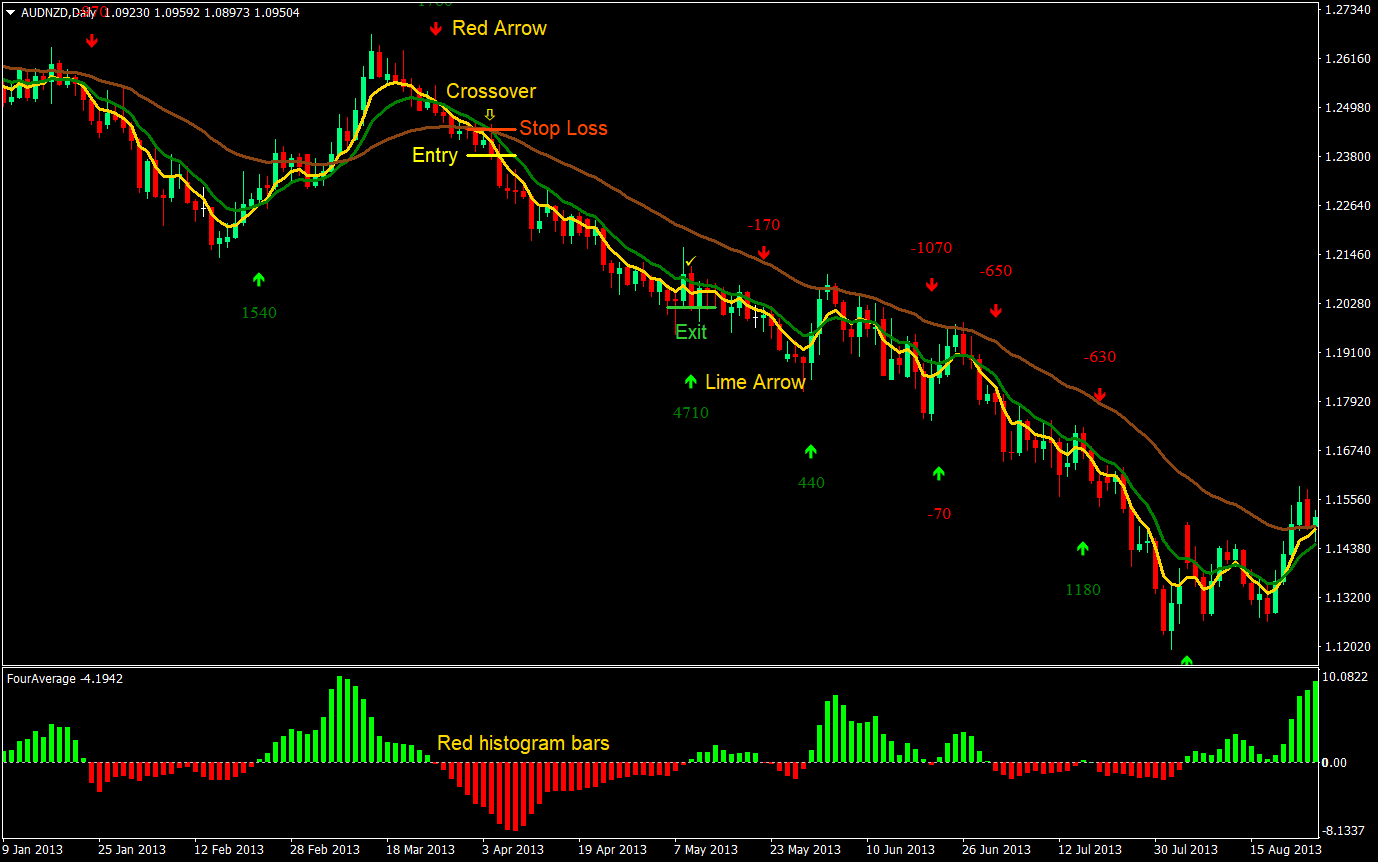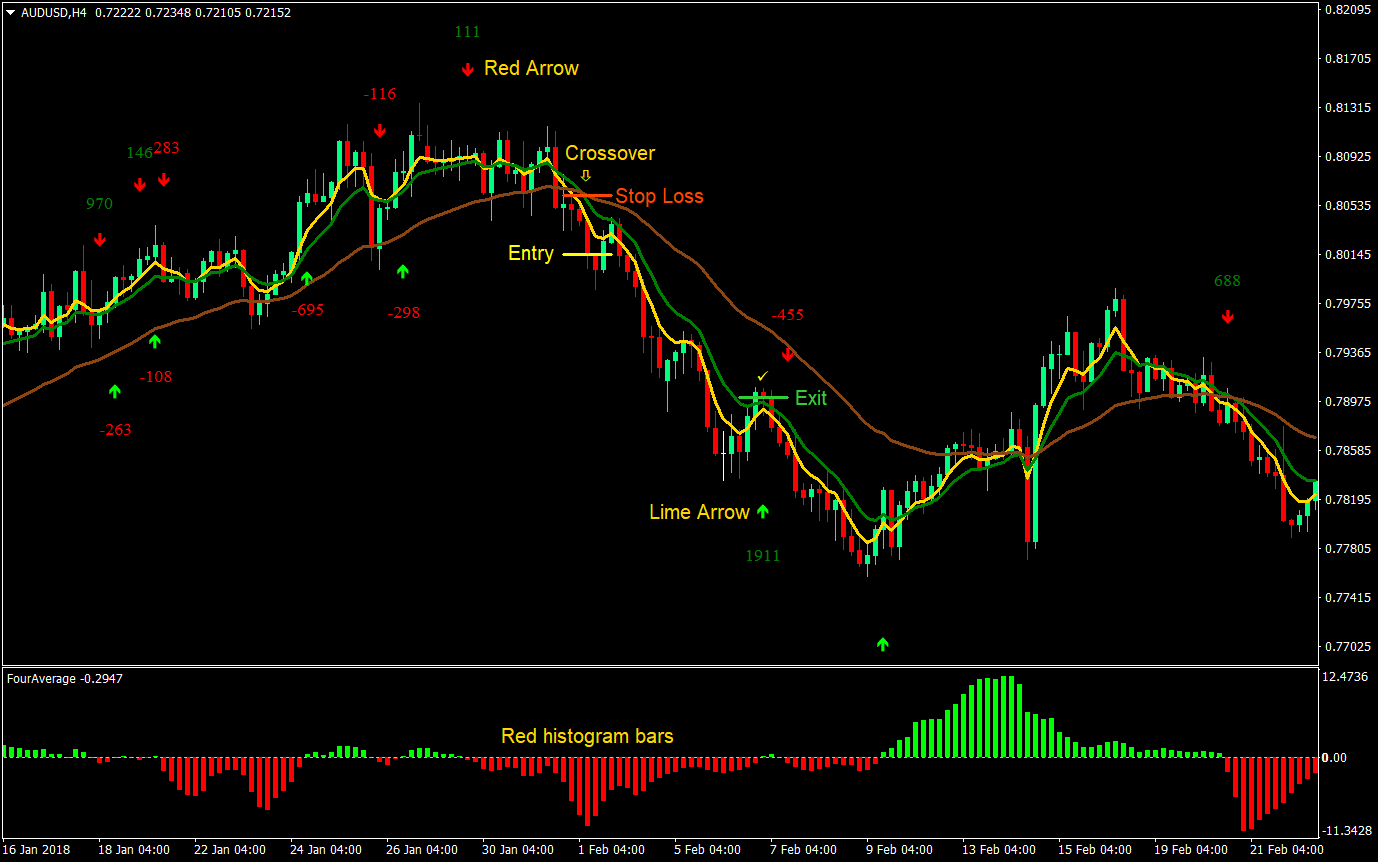5-10-34 Forex Trading Strategy
“More is better!” This is often what comes to mind when beginning trader first dip their feet into trading. They’d start learning about trading, have some wins here and there, then they experience a loss. Some traders, having the wrong expectation about trading, would feel betrayed by the market as they experience their first loss. So, what do they do? They try to learn more. Then, as they learn something new, they add this to whatever they are currently doing. Then, they win a few, then lose again. So, they try learning a new trick, maybe an indicator or two, and add it to their strategy. This keeps going on again and again until before you know it, their charts are filled with squiggly lines that looks like spaghetti. They now have an overly complicated trading strategy. But is this really better? Not really.
Now I’m not against complicated strategies and I’m certainly not against learning, but there is a thin line between aiming for perfection and being in this cycle of doom. Having an overly complicated strategy could lead to an impossible trade setup that yields very few opportunities, which would make it harder to prove its profitability, and could cause traders to be disillusioned whenever a seemingly perfect trade setup turns out to be a loser. Sometimes simple is better.
Crossover Strategy – A Basic Strategy for Beginners
Crossover strategies are probably one of the simplest strategies available to a trader. It is easy to learn and follow, even a kid could do it.
Crossover strategies generate trade setups whenever there is a crossover of two or more moving averages with different parameters. Buy signals are generated when the fast moving average crosses above the slow moving averages indicating that the market is starting to head up. Sell signals on the other hand are generated as the fast moving average crosses below the slow moving average indicating a probable start of a bearish market.
Now, although crossover strategies are simple, it isn’t perfect. Traders could get whacked using crossover strategies on a choppy market. But on the right market scenario, this could mean catching a start of a trending market and squeezing every last pip out of that move.
Trading Strategy Concept
The 5-10-34 Forex Trading Strategy is a simple crossover strategy that uses three moving averages, the 5-period, 10-period and 34-period Exponential Moving Averages (EMA). This strategy aims to catch short-term strong trends which could yield big profits.
The 5 and 10-period EMAs represent the short-term trend while the 34-period EMA represents the mid-term trend.
As price begins a bullish trend, the 5-EMA would often be the first to pierce above the 10 and 34-period EMAs. Then, the 10-period EMA would then follow crossing above the 34 EMA. This then forms a stack with the 5 EMA at the top and the 34 EMA at the bottom. This would be the typical buy signal.
As for sell signals, it is generated whenever the 5 and 10-period EMA crosses below the 34 EMA. In this case the stack would be the 34 EMA at the top and the 5 EMA at the bottom.
However, to avoid being whipsawed by the market, we will be adding another filter using a custom indicator, the fouraverage-indicator. This custom indicator would print lime histograms and an upward arrow to signify a bullish market condition and red histograms and a downward arrow to signify a bearish market condition.
Indicator:
Timeframe: preferably 4-hour and daily charts
Trading Session: any
Buy (Long) Trade Setup
Entry
Close the trade as soon as the fouraverage-indicator prints a red downward arrow indicating the probable start of a bearish market condition


Sell (Short) Trade Setup
Entry


Conclusion
This simple crossover strategy is a basic yet effective strategy for trading strong short to medium term trends. If done right, this strategy would allow traders to catch huge profits in a very short time.
Add to it the fouraverage-indicator which filters much of the lower probability trade setups, you could be stacking profits quickly.
However, this strategy would be difficult to use or even inappropriate during a ranging or choppy market. During this kind of market condition, trading this strategy could cause a heartache as price would often hit the stop loss at the 10 EMA often.
Use this trading strategy during the right market condition and you could be off to some profits.
“More is better!” This is often what comes to mind when beginning trader first dip their feet into trading. They’d start learning about trading, have some wins here and there, then they experience a loss. Some traders, having the wrong expectation about trading, would feel betrayed by the market as they experience their first loss. So, what do they do? They try to learn more. Then, as they learn something new, they add this to whatever they are currently doing. Then, they win a few, then lose again. So, they try learning a new trick, maybe an indicator or two, and add it to their strategy. This keeps going on again and again until before you know it, their charts are filled with squiggly lines that looks like spaghetti. They now have an overly complicated trading strategy. But is this really better? Not really.
Now I’m not against complicated strategies and I’m certainly not against learning, but there is a thin line between aiming for perfection and being in this cycle of doom. Having an overly complicated strategy could lead to an impossible trade setup that yields very few opportunities, which would make it harder to prove its profitability, and could cause traders to be disillusioned whenever a seemingly perfect trade setup turns out to be a loser. Sometimes simple is better.
Crossover Strategy – A Basic Strategy for Beginners
Crossover strategies are probably one of the simplest strategies available to a trader. It is easy to learn and follow, even a kid could do it.
Crossover strategies generate trade setups whenever there is a crossover of two or more moving averages with different parameters. Buy signals are generated when the fast moving average crosses above the slow moving averages indicating that the market is starting to head up. Sell signals on the other hand are generated as the fast moving average crosses below the slow moving average indicating a probable start of a bearish market.
Now, although crossover strategies are simple, it isn’t perfect. Traders could get whacked using crossover strategies on a choppy market. But on the right market scenario, this could mean catching a start of a trending market and squeezing every last pip out of that move.
Trading Strategy Concept
The 5-10-34 Forex Trading Strategy is a simple crossover strategy that uses three moving averages, the 5-period, 10-period and 34-period Exponential Moving Averages (EMA). This strategy aims to catch short-term strong trends which could yield big profits.
The 5 and 10-period EMAs represent the short-term trend while the 34-period EMA represents the mid-term trend.
As price begins a bullish trend, the 5-EMA would often be the first to pierce above the 10 and 34-period EMAs. Then, the 10-period EMA would then follow crossing above the 34 EMA. This then forms a stack with the 5 EMA at the top and the 34 EMA at the bottom. This would be the typical buy signal.
As for sell signals, it is generated whenever the 5 and 10-period EMA crosses below the 34 EMA. In this case the stack would be the 34 EMA at the top and the 5 EMA at the bottom.
However, to avoid being whipsawed by the market, we will be adding another filter using a custom indicator, the fouraverage-indicator. This custom indicator would print lime histograms and an upward arrow to signify a bullish market condition and red histograms and a downward arrow to signify a bearish market condition.
Indicator:
- 5 EMA (gold)
- 10 EMA (green)
- 34 EMA (brown)
- fouraverage-indicator
Timeframe: preferably 4-hour and daily charts
Trading Session: any
Buy (Long) Trade Setup
Entry
- The fouraverage-indicator should be printing lime histogram bars indicating a bullish market condition
- The fouraverage-indicator should have printed a lime upward arrow indicating the probable start of a bullish trend
- The 5 EMA should cross above 10 and 34 EMA forming a stack as follows:
- 5 EMA: top
- 10 EMA: middle
- 34 EMA: bottom
- Enter a buy order at the confluence of the above rules
- Set the stop loss below the 10 EMA
Close the trade as soon as the fouraverage-indicator prints a red downward arrow indicating the probable start of a bearish market condition


Sell (Short) Trade Setup
Entry
- The fouraverage-indicator should be printing red histogram bars indicating a bearish market condition
- The fouraverage-indicator should have printed a red downward arrow indicating the probable start of a bearish trend
- The 5 EMA should cross below 10 and 34 EMA forming a stack as follows:
- 34 EMA: top
- 10 EMA: middle
- 5 EMA: bottom
- Enter a sell order at the confluence of the above rules
- Set the stop loss above the 10 EMA
- Close the trade as soon as the fouraverage-indicator prints a lime upward arrow indicating the probable start of a bullish market condition


Conclusion
This simple crossover strategy is a basic yet effective strategy for trading strong short to medium term trends. If done right, this strategy would allow traders to catch huge profits in a very short time.
Add to it the fouraverage-indicator which filters much of the lower probability trade setups, you could be stacking profits quickly.
However, this strategy would be difficult to use or even inappropriate during a ranging or choppy market. During this kind of market condition, trading this strategy could cause a heartache as price would often hit the stop loss at the 10 EMA often.
Use this trading strategy during the right market condition and you could be off to some profits.



